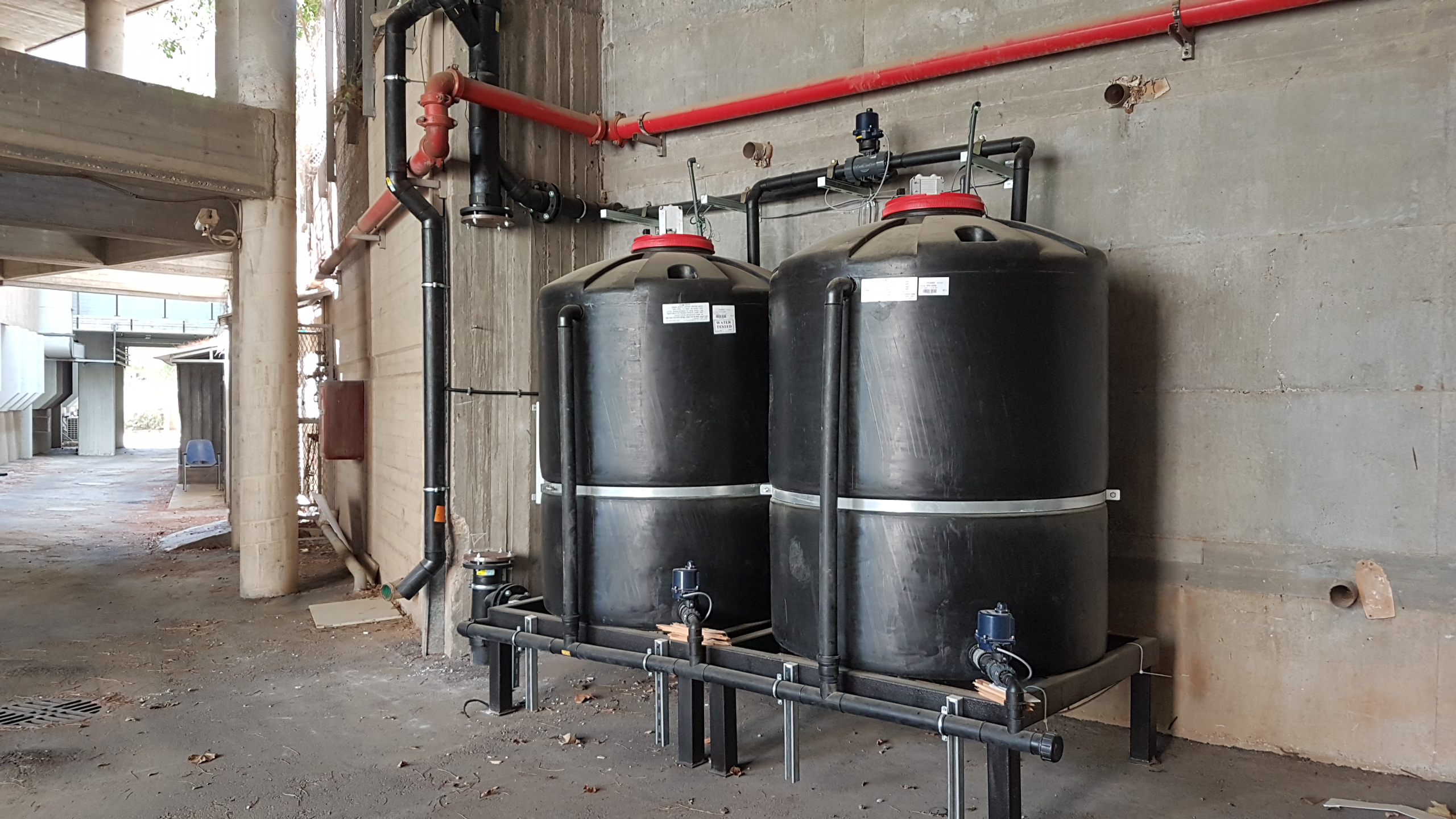A Boiling Forecast for the Century
July 7, 2019Israel faces alarming news about extreme heat due to global climate change, but trouble almost always comes with opportunity
The potential good news is that with proper urban planning, anticipated heat stresses can be alleviated. Through a series of studies and experiments, scientists across Israel have focused on potential climate trajectories for the following decades. These researchers further delve into how cities should plan on avoiding the urban heat-island effect – which is the phenomenon of artificial surfaces like pavement and asphalt reflecting less radiation than forested areas would – by mitigating expected climate change.
Over the past decade, “Tomorrow, a Large Heat Wave is Expected to Pass Through the Country” has become a common headline. Over the past 30 years, Israel has seen a 2°C (3.6°F) increase in average daily maximum temperatures. This 2°C temperature increase is merely a 30-year snippet of activity. From 1950-2016, there has actually been an increase of 1.3°C (2.3°F) in the average daily temperature in Israel.
Incidents of extreme heat stress are not only becoming more frequent in Israel. This is a global trend. According to the Fourth National Climate Assessment (NCA4), “There have been marked changes in temperature extremes across the contiguous United States,” and “The frequency of cold waves has decreased since the early 1900s while the frequency of heat waves has increased since the mid-1960s.” Furthermore, The Intergovernmental Panel on Climate Change stated, “Global warming of 1.5 °C above pre-industrial levels [is] related global greenhouse gas emission pathways, [and causes] further warming and long-lasting changes in all components of the climate system.” This increases the likelihood of severe climate behavior, which matches the trends now being seen in Israel.
It’s widely believed that the climate will continue to warm almost another 2°C by 2050. This prediction is based on the global average temperature increase of 0.9°C since the pre-industrial era. Meanwhile, Israel has increased by 1.3°C over the same time period. Simultaneous with climate change, Israel’s demographics are expected to change. By 2048, the population is estimated to reach 15.2 million (a 72% increase), and the number of residents living in cities and building density are expected to increase, while green open-space area is reduced.

Eight months per year exhibiting extreme heat stress
A study conducted by Dr. Ariel Freundlich, Esti Haitman-Farkash and Leahy Chen of the Achva Academic College, was presented at the 2019 Annual Science and Environment Conference last month at Tel Aviv University. The study examines how the anticipated 2-3°C increase of daily maximum temperatures by 2048 will contribute to, or catalyze, the heat stress events in the metropolitan Dan region.
Thermal sensations are the subjective ways we identify hot and cold temperatures. Thermal activities influence weather, climate and the physical environment. Freundlich states, “The temperature a person feels is not solely dependent on one variable, but on six: air temperature, radiation, relative humidity, wind (which are all climatic-external variables), metabolic rate/type, and type of clothing.” His study considered these environmental factors and how they will influence the Dan region. To collect and synthesize this data, researchers used a CAD bio-meteorological model called RayMan. This model organizes fabricated geographic and climatic data and simulates how it would feel to be exposed to several potential environments. This technology is very useful in determining how frequent heat stress will affect living conditions.
“In the study, we ran the software to model current data in the Dan region, and then, data for 30 years ahead,” Freundlich states. “With that, we tried to estimate the incoming heat stress in various current and future scenarios.” Specifically, the research team formulated “three possible scenarios: the Dan region as it currently is in terms of population size and density; a pessimistic future scenario where population growth is as predicted in 2048, and significantly higher building density and lower forest density; and then a future scenario where population and building growth occurs but city planning is properly implemented to accommodate such changes in the Dan region.” With these three scenarios in mind, the research team was able to relatively predict climate conditions and trends.
For each scenario, a model was simulated. According to RayMan, Israel’s current climate trajectory is a 2-3°C rise by 2050. Under this condition, significant heat stress events during six months of the year, and two months would experience extreme heat stress. In the pessimistic scenario of a more-than 3°C rise, the model states all 12 months of the year had significant heat stress, of which eight of those months reached the extreme heat level. The future heat stress in this scenario is almost double compared to the present. The optimistic scenario, however, shows a trajectory where only four to six months of significant heat stress (of about 33°C), and no extreme heat stress effects. Furthermore, the model shows that there would be a 45% reduction in heat stress due to well-executed design of the urban environment.
Freundlich found that certain urban-planning changes could help mitigate the expected local temperature increase. For example, “It’s understood that the presence of wind and shading are key in reducing heat stress.” The issue is, in the “pessimistic future scenario of population and building growth, there’s the assumption that due to increased building density, wind flow and speed will be significantly reduced – leading to the extreme heat conditions depicted in the model.” Under sustainable city planning, necessary issues can be addressed, and heat stress alleviated.
A story of shade and hope
Now we ask, what eco-friendly measures do we need to take to lessen these thermal heat stress conditions in the light of current, and anticipated rapid climate change? According to Dr. Orly Ronen, who works in the Tel Aviv University Urban Innovation and Sustainability Lab, “We are seeing signs of future warming not only due to the climate crisis but also because of the lack of attention being paid to sustainable urban planning.” Concurrent to her agenda, it’s crucial that city planners and policy-makers prioritize the minimizing of heat stress.
Adding on to that, Ronen states that the main aspects to consider are shading in urban areas and development of nature areas known as green spaces within and surrounding cities. As mentioned earlier, the urban heat-island effect has become prevalent. In the midst of these negative climate projections, it’s crucial to utilize the knowledge scientists like Freundlich have gathered and implement the changes our urban environment will need.
This ZAVIT article was also published in Jerusalem Post on 06/07/2019.







